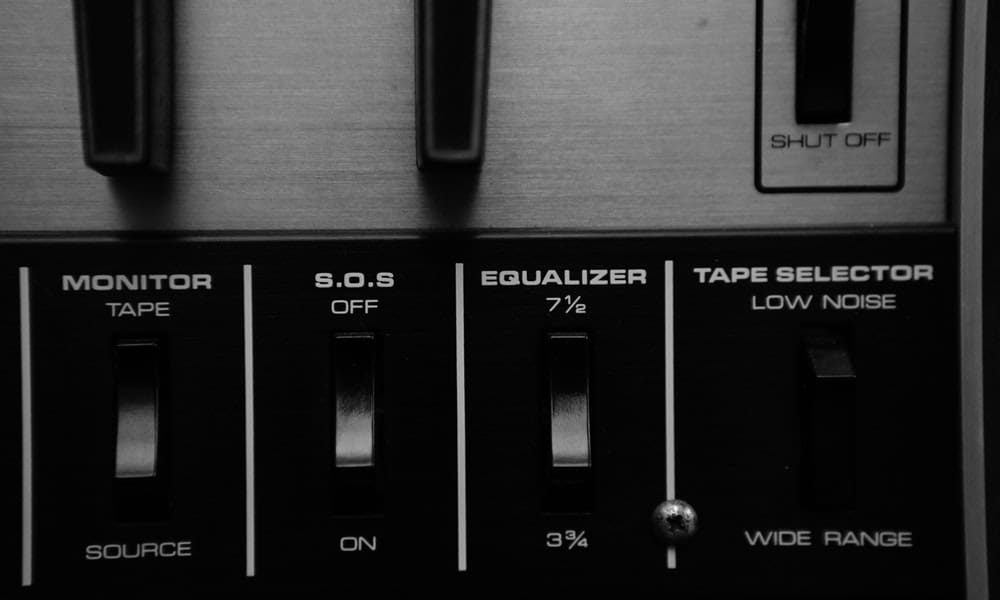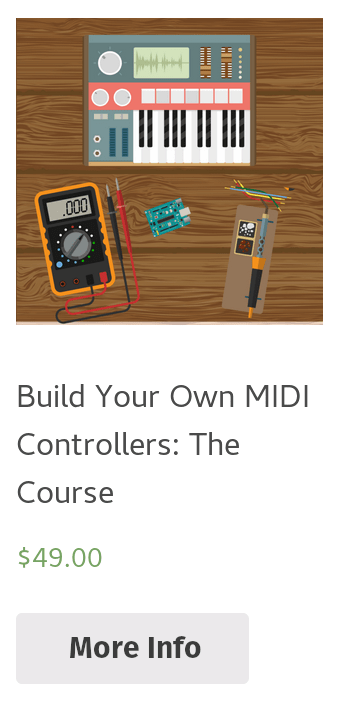How To Compress Vocals Properly (+ Our Go-To Vocal Compression Settings)
So you’ve recorded, edited and mixed some killer vocals and now you’re ready to compress the song to make it sound professional.
Well, you’ve come to the right place.
In this article, I’ll cover how you can learn to compress vocals like the pros -- the engineering gods.
The Basic Purpose of Compression on Vocals
Compression is such a mystery to many artists. Before I learned how to do it, compression seemed like some dark magic that the mixing engineer performed.
Compression is, simply, compressing the audio, making the loud parts and the quiet parts closer to each other in volume. This allows you to boost the overall volume without the audio clipping.
This step is crucial for two reasons…
To Make Vocals Sound Radio-Ready
The vocals on every song you hear on mainstream radio have been compressed -- I guarantee it. And if you want your music to compete, you cannot skip this step when mixing your own vocal recordings.
To Make Vocals Sit On Top Of The Mix
The melody and lyrics carry a song, so if your words and voice get overpowered in the mix, the listener will be lost. Compressing your vocals helps them sit on top of the mix.
Think of it this way:
Compression invites the vocals to the front of the stage; to the front of your song.
Should You EQ Before or After Compression?

You can EQ and then compress your audio, or vice versa. It depends on the sound you want.
Deciding in what order to alter your audio is important as it will affect the final result. It has to do with something called the Signal Chain.
Signal Chain: the order in which audio is altered
Definitely check out our VST Plugin Master List to find some great compressor plugins. We have even more compressor choices in our Sound Design Plugin roundup.
Generally, EQing before compression will give you a warmer, fuller tone. Whereas EQing after compression will give the audio a cleaner, clearer sound.
So depending on your desired sound and even the instrument you’re mixing, you can go either way.
EQ Is A Polish, Not A Bandage
As , getting a good recording is the best way to ensure you start EQ on the right foot. EQ enhances your recording, but if your recording stinks, EQ can only do so much.
EQ is not a tool for fixing, it’s a polishing kit.
Don’t Overdo It
So if EQ is a polish, applying too much will be messy. Too much EQing can be distracting to the listener. You want to make your music sound professional, not like it’s trying to overcompensate for something.
Keep Your Genre In Mind
Every genre has a different feel and attitude, so you’ll want to mix knowing what genre you’re most shooting for. Here’s a breakdown of the genres with some general rules:
De-essing
De-essing is basically cutting down on mouth sounds like “s”, “z” and “sh.” Even if you have a pop filter (which you should), you can still run across some of these sounds.
That’s where de-essing can come in handy.
Find a decent de-essing plugin and find a suitable preset. Then adjust from there until it’s to your liking.
One thing to note is that if you apply too much de-esser, you vocals will make you sound like you have a lisp.
Keep Your Ears Open
All of these rules come down to one thing: does it sound good to you? It will take time to improve your ability to hear certain things, but the final decision is up to your ears.
When To Use a Compressor
NOTE TO DOUG: Please link “you’d use a compressor” to How to Compress Vocals Like a God.
In what situations you’d use a compressor (and in what ways) is something you’ll need to know. That’s what we’ll cover in this section.
Just like when you’re EQing, compression is genre-specific too. Generally, follow the same guidelines for when you’re EQing.
To Shape The Tone
One thing a compressor can do is shape the tone of your vocals by removing aggressive sounds.
For Consistency
Another thing a compressor does is give the whole recording consistency in volume. It compresses the audio so the quiet parts and loud parts are closer in volume to each other.
A Situation Where You SHOULDN’T Compress Vocals
If you enter a remix competition and/or simply have received remix stems, the included vocal track is most likely going to come already compressed. Over-compression is a big mistake a lot of new producers make.
Unless you are using compression for a specific effect (such as sidechaining), you are not going to want to add even more compression.
Keep that in mind when crafting the next chart-topping remix!
Related: How to Get Permission to Remix a Song
Best Compressor Plugins
Alright, now that you know the steps and some recommended settings, you need to make sure you have the right compressor plugins.
I know, it’s overwhelming.
That’s why we made a guide to the best plugins available.
We really put a lot of effort into creating the best resource available. We even have a Sound Design Plugin Guide that includes plenty of great compressors.
For now, here’s an awesome plugin that we always recommend:
FabFilter Pro-C 2
The Pro-C 2 boasts the versatility to compress anything from vocals to drums, as well as master your entire track. You can do a 30-day trial of this compressor, after which it costs about $180.

Applying Compression: Our Favorite Settings
Now let’s get to the details of how to apply your compressor.
Tonal Compression
When shaping the tone with a compressor, you’ll want to use a slow attack and release time -- if not, your vocals could end up getting pushed to the back of the mix.
Here are the basic steps:
- With your compressor open, lower the threshold to the extreme settings, and raise the ratio in the same manner (this will help you hear how the compressor is working)
- Start by adding a medium attack time (around 15ms) and adjust to your liking from there
- Then add a medium release time (around 40ms) and adjust from there
- Once you figure out your attack and release times, dial down the ratio to right around 1.5:1 (anywhere between 1 and 2 is good)
- Take the threshold back up to about -24dB
- Then adjust the threshold and ration times until you’re getting about 2-3dB of gain reduction
With tonal compression, the most important part is the attack time. Typically, fast attack times are good for thick and heavy vocals while a slower attack time is good for aggressive vocals that punch through the mix.
Here are the basic settings to start with:
- Threshold: –24dB
- Ratio: 1.5:1–2:1
- Attack: <1 ms
- Release: About 40 ms
- Gain Reduction: 2-3dB
- Makeup Gain: Adjust until the output level matches the input level.
Dynamic Compression
Dynamic compression is all about knocking off the peaks of your vocal, lowering their volume.
Here are the basic steps for dynamic compression:
- With your compressor open, dial the ratio to 10:1
- Set the knee to “hard”
- Adjust the threshold so the compressor is affecting only the loudest peaks
- Dial up a medium attack time (around 3-10ms)
- Set your release time to 20ms and adjust until the compressor is pumping in time with the music
- Finally, lower your ratio to around 2:1 and look for 2-3dB of gain reduction
If you’re looking for a more aggressive sound, go with a slower attack time. For a more weighty sound, go with a faster attack time.
Here are the basic settings for dynamic compression:
- Ratio: 2:1
- Attack Time: 5ms
- Release Time: 20ms
- Threshold: -24dB
- Gain Reduction: 2-3dB
- Knee: Hard
- Makeup Gain: 1dB
Final Thoughts
Learning how to compress vocals is not something you’ll master overnight. This is a skill that you’ll have to hone with lots of practice. The more you do it, the better your ears will get at hearing what sounds right.

Leave a Comment
One comment
These settings are awesome. …My vocals sound great!!